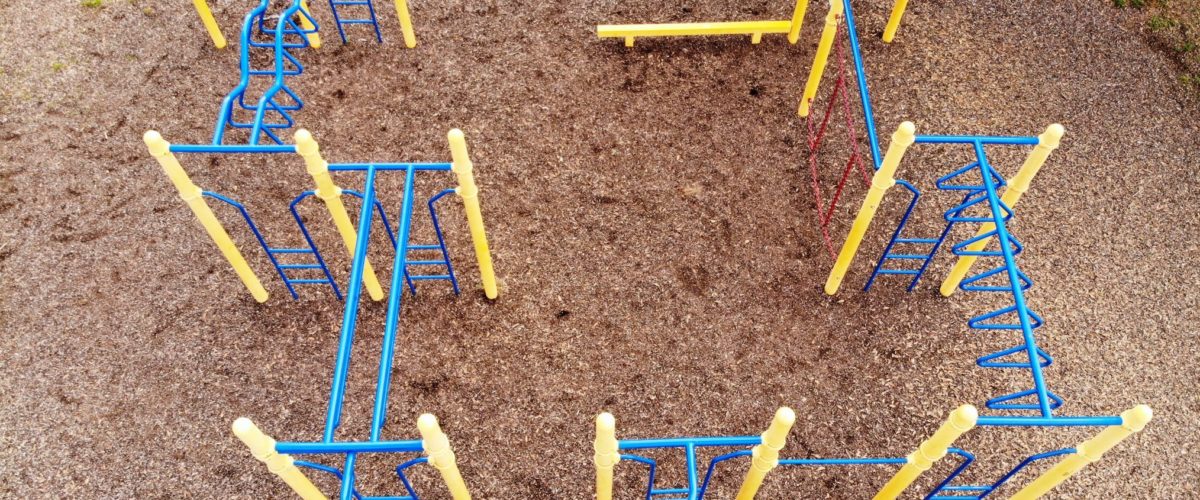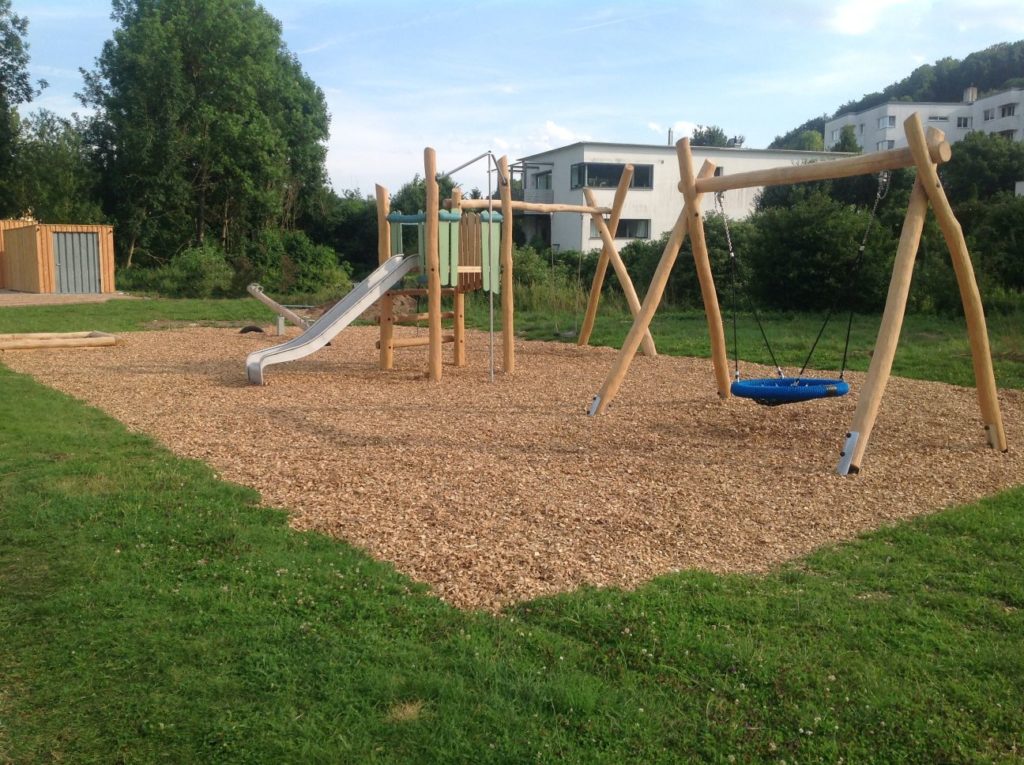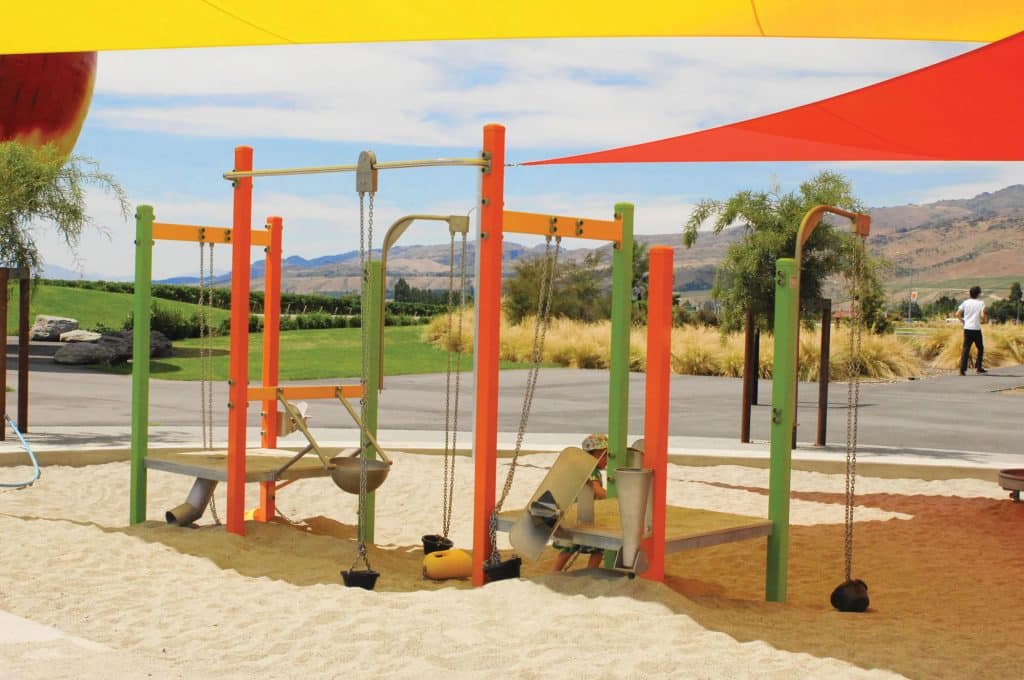Playground ground covers are not one of the first things people consider when thinking about designing a playground. However, the surface material underneath a playground can make a big difference in safety when children fall.
With greater safety standards, regular maintenance, and restrictions on playground structures, playgrounds today are safer than ever. We explore what the best materials are for a playground to help reduce the impact from a fall.
What are the best surface materials?
With the right materials underneath a playground, playground designers, schools and councils can work together to lower the risk of injury when kids fall off a playground structure. There are no materials (at present) that are completely injury-proof, however, making use of the right materials can make it a better experience for everyone.
According to the AS/NZ 4422 safety standards for playground surfacing, playgrounds in Australia and New Zealand must comply with the safety standards for covering playground surfaces and must absorb the energy of a child’s fall.
Ground-cover materials
Materials that are often used to cover playground floor surfaces include bark soft-fall, impact-absorbing sand, wet pour rubber and rubber tiles and pavers.
Bark Soft fall
Bark soft-fall has traditionally been the most common finishing material for playground floors because it is easy to install, its readily available, it spreads easily and is a cheaper option upfront.
Bark will need regular maintenance and regular top-ups as it can be easily displaced. The impact attenuation of bark soft fall can be weakened if it’s too shallow, wet, frozen, or combined with dirt. Bark soft fall is also difficult for wheelchair users to navigate so it can be a good idea to complement the area with another surface.
Bark soft fall does its job at protecting falls if it is maintained regularly. This includes raking the surface, keeping it at a minimum depth and topping it up when necessary.
Impact-absorbing sand
Like bark soft fall, the use of sand in playgrounds has long been debated. From a first glance it appears to be an attractive choice with a low initial cost, easy installation and readily available, however, it does come with a list of cons. Sand ground-cover can also easily conceal hazardous objects, can be easily displaced, is not suitable for wheelchair access and when combined with dirt, may compact and develop a concrete-like hardness—something that is definitely not safe to fall on.
Sand ground coverings are also attractive to animals and you may find some concealed animal faeces. Sand can also be very abrasive to the powdercoated surfaces on the playground creating premature wear areas. Sand ground covering will still work well if it is regularly maintained. This includes raking the sand and keeping it topped up regularly.
Wet pour rubber (also known as soft-fall rubber)
Soft-fall rubber can be found on a lot of playgrounds. This material has become more popular over the years because it is durable, requires low maintenances, has a water-permeable surface, and is great for wheelchair access.
However, like all materials, soft-fall is not free from some cons. Soft-fall can be expensive to install, can get hot in summer, can be slippery when wet and the impact attenuation on the rubber surface can vary. When looking at soft-fall surfaces for your playground make sure you are using a high-quality rubberised surface to keep children safe.
Rubber tiles
Rubber tiles are similar in nature to soft-fall rubber and allow kids to play, run, and exercise in a playground easily. Like soft-fall rubber they are durable, water-permeable, low maintenance and wheelchair friendly.
Rubber tiles and pavers do need to be “joined” and this means they can present a trip hazard if not installed properly and as they get older and change shape.
Stop that bounce
As mentioned earlier, playgrounds that comply with the AS/NZ safety standards need to absorb the energy of a child’s fall over a long period of time and over a variety of heights. One thing you can be sure of is that if you have compliant playground surfacing, you have gone a long way in reducing the chance of a major injury to a user of the playground.
For real-life case studies on play spaces that maximise fun and learning through outdoor play, visit the Projects section of our website





